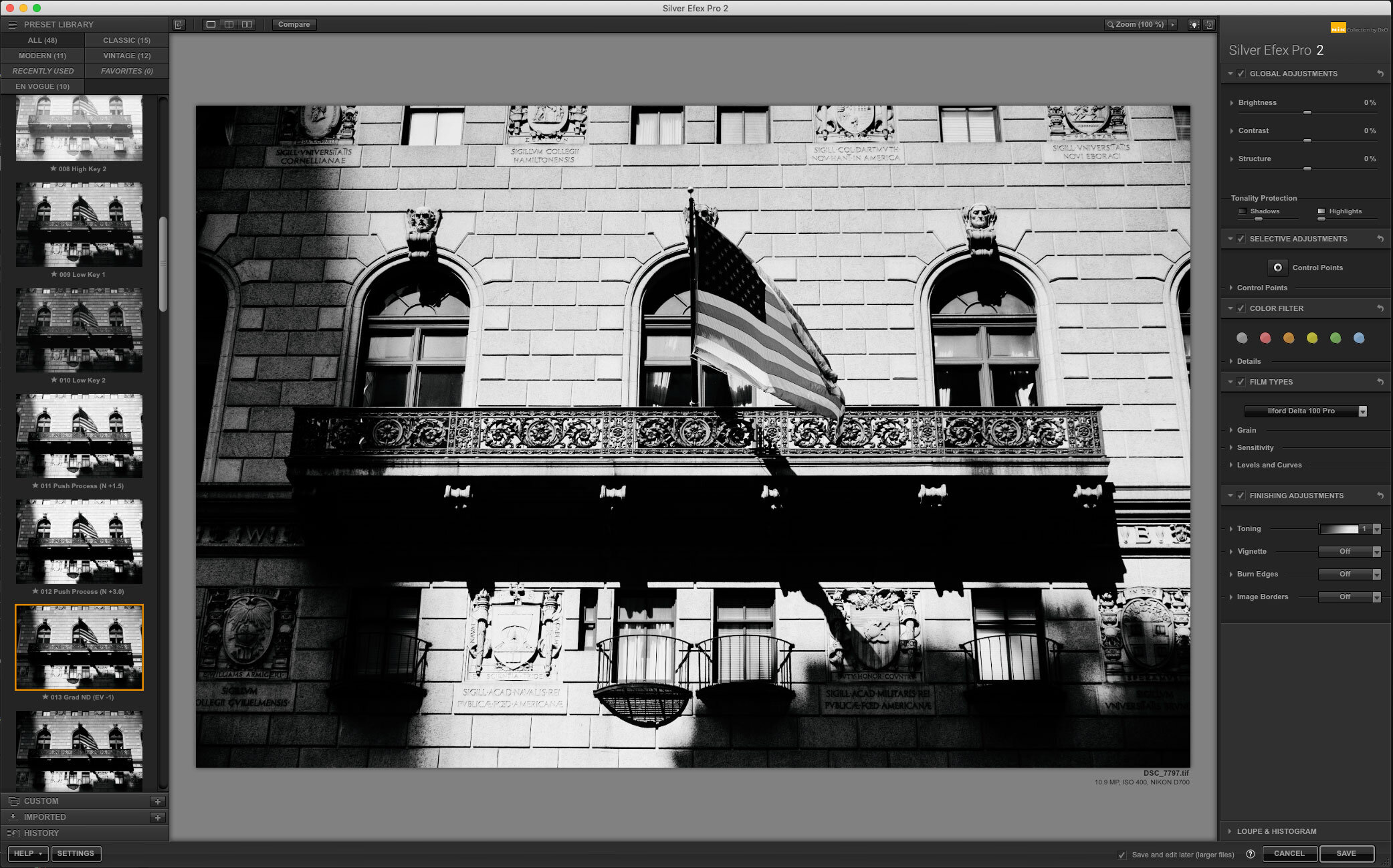

Name the custom preset that you create and press OK.


Before pressing the Save button on the lower right, to preserve most of the edits you made, select the “+” but- ton on the CUSTOM panel on the lower left side panel of the PRESET LIBRARY column. After SEPII launches, complete your editing with the presets and edits as desired.Ħ. Select Edit After SEPII launches, complete your editing with the presets and edits as desired.ĥ. Edit Original (This option is not selectable for raw files.)Ĥ.

Select one of the following in the dialog box: Right click on the image and select Edit In > Silver Efex Pro Select the image you wish to convert using SEPII. If you are editing your images in Lightroom, you will need to launch SEPII by doing as follows: This article discusses how you can launch this program from both Lightroom and Photoshop CC and also covers how you can return to the application to start where you left off with additional edits. Now move the Brightness slider to increase the brightness of her skin.Silver Efex Pro II (SEPII) is a market-leading monochrome conversion plug-in that works well with both Lightroom and Photoshop. Use the top slider to decrease the adjustment circle so it encircles just her face the app will use its tones to find its edges.
#Nik silver efex pro 2 selective color skin#
This model’s skin could use just a bit of brightening, so zoom in on her face, then click to add a control point to her skin, being careful not to apply it to any area with makeup. Unlike in Photoshop proper, you don’t need to create masks to do selective adjustments using Control Points, the program finds the edges for you. Move the Shadows slider to increase structure, but leave midtone and highlight structure alone-increasing it in those tones would make this portrait unflattering. Now head to the Structure sliders, which can find objects and increase contrast within them, adding apparent detail. Bring up the Amplify Blacks slider to darken the shadows without turning the snow in the background gray, and turn up Amplify Whites to bring back some of the bright details in her coat. Use the Amplify Whites and Amplify Blacks sliders to isolate these tones, calculated according to the tonality in each section of the image. Move the sliders to adjust the brightness levels of your highlights, midtones, and shadows. Begin with Brightness Dynamic Brightness allows you to brighten or darken your image while maintaining overall contrast range. Click the triangle next to each to fine-tune. From here, you can select one of the presets on the left as a starting point (each one is adjustable) or evaluate your image and begin adjusting manually.** If you don’t like any of the presets that you try, click the first one, Neutral, to get back to the default conversion**.Įach of the Global Adjustments on the right side of the screen have sub-adjustments. Silver Efex Pro starts you off with a neutral conversion-you’ll notice that all of the adjustment sliders on the right side of the screen are set at zero. As you adjust your image, Photoshop remains running in the background.
#Nik silver efex pro 2 selective color software#
This one, from Finnish photographer Mikko Reinikainen, is striking as a color photo, but its vintage style makes it a good candidate for the black-and-white treatment.** Go to Filter > Nik Software > Silver Efex Pro 2 to start working in the plug-in**. Open the image that you want to convert in Photoshop. You will quickly see how different (and more efficient) it is to make a b&w conversion in this plug-in compared with using one of Photoshop’s tools. Here’s an intro to working with Silver Efex that will show you how and when to use some of its unusual features. In RAW workflow programs such as Aperture or Adobe Photoshop Lightroom, Silver Efex can bring your converted file back in as a TIFF. In Photoshop, after you’ve made your adjustments, Silver Efex closes and can output your b&w conversion to a new layer. And if you’ve never used a plug-in before, the way it works can be confusing at first.Ī plug-in acts as a program within a program, so to work with Silver Efex, you need to open it within one of its supported applications, such as Adobe Photoshop or Apple Aperture. It is simply the fastest way we know to create really beautiful black-and-white photographs from color image files.īut while it’s easy to make conversions once you get the hang of the software, Silver Efex’s tool names and selective adjustment controls aren’t necessarily intuitive to a new user. If you read our monthly Fix It Fast department you know how much we love Nik’s Silver Efex Pro 2 plug-in. Photo: Mikko Reinikainen, mikkoreinikainen.fi


 0 kommentar(er)
0 kommentar(er)
